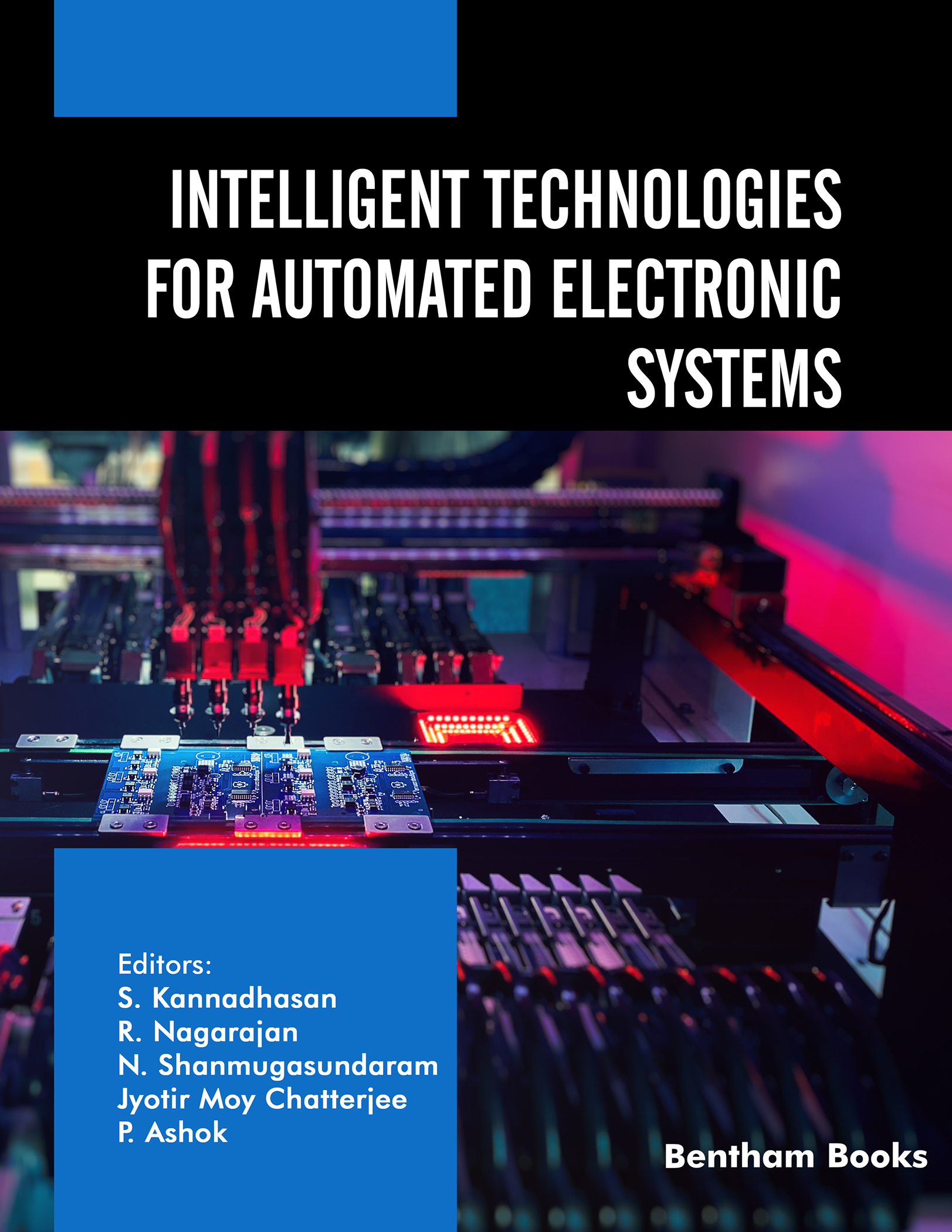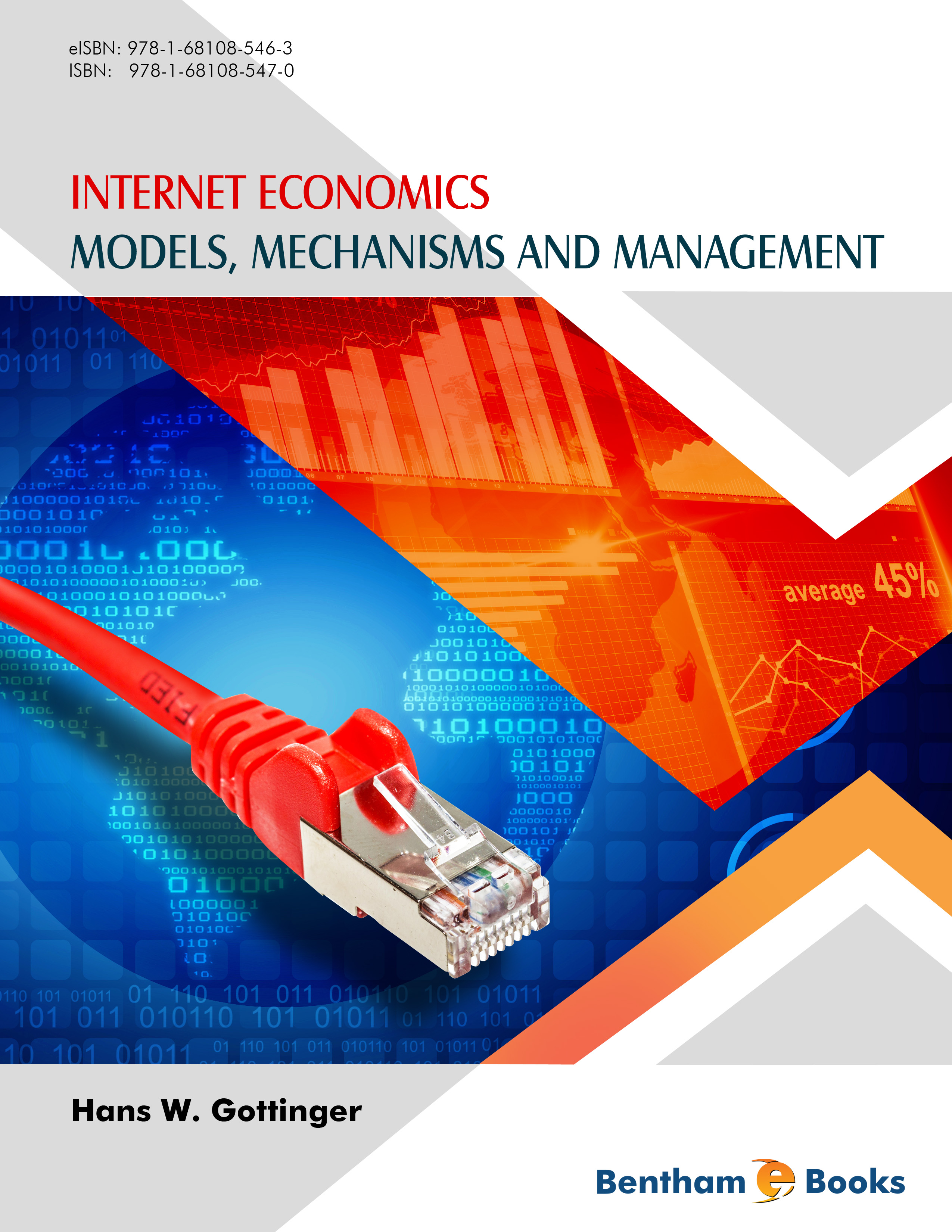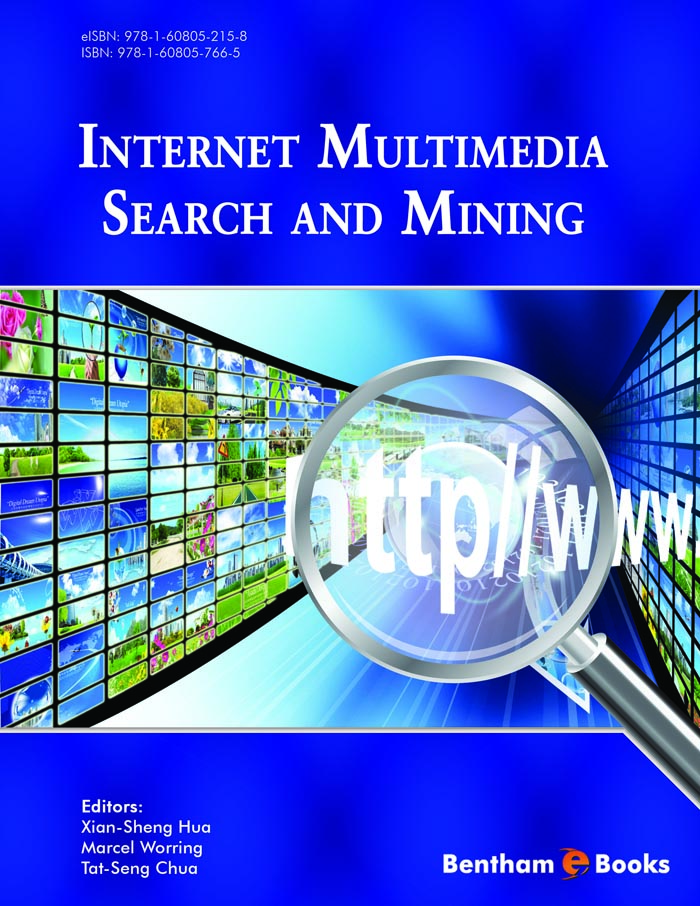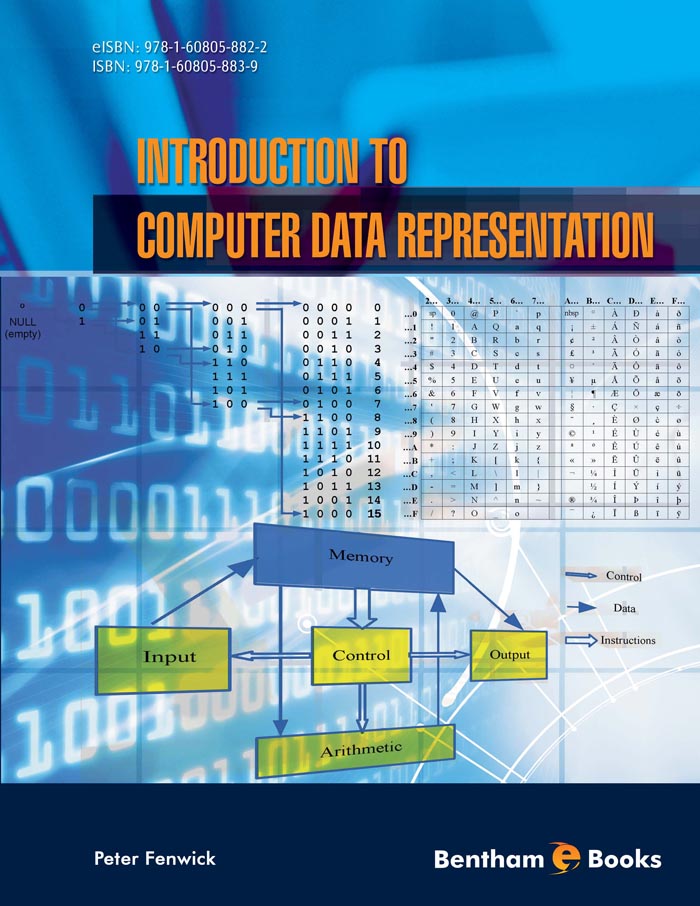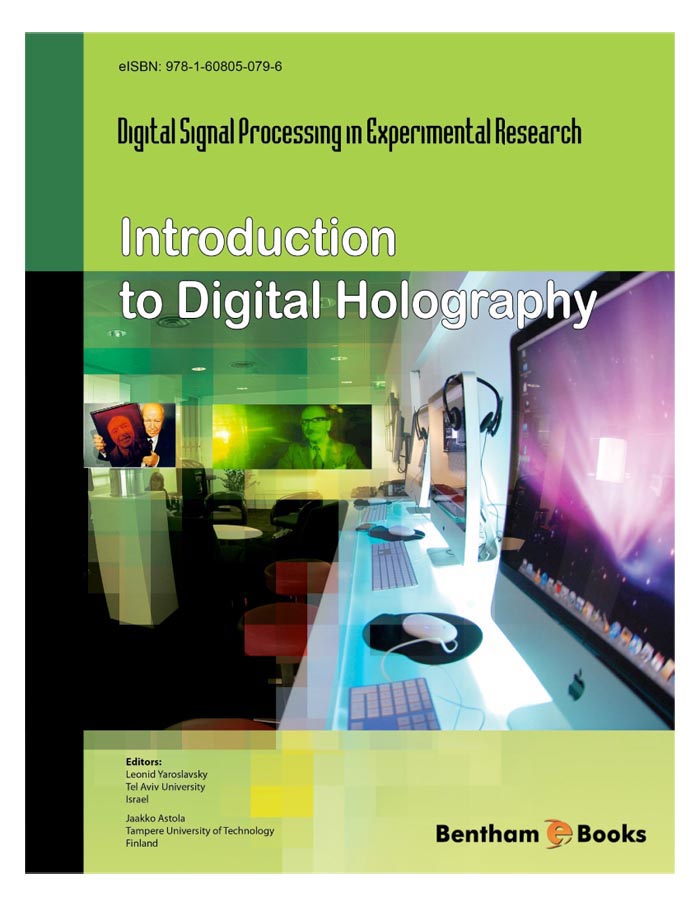Bentham Science Publishers
Bentham Science Publishers is a major publisher of more than 100 peer-reviewed science, technology and medical (STM) journals, along with a rapidly growing collection of eBooks. Since 1993, Bentham Science Publishers has been catering to the information needs of the pharmaceutical, engineering, biomedical and medical research community.1001 - 1020 of 1791 results
-
-
Intelligent Technologies for Automated Electronic Systems
Advanced Technologies for Science and Engineering
More LessThis volume explores a diverse range of applications for automated machine learning and predictive analytics. The content provides use cases for machine learning in different industries such as healthcare, agriculture, cybersecurity, computing and transportation.
Chapter 1 introduces an innovative device for automatically notifying and analyzing the impact of automobile accidents. Chapter 2 focuses on the detection of malaria using systematized image processing techniques. In Chapter 3, an intelligent technique based on LMEPOP and fuzzy logic for the segmentation of defocus blur is discussed. Predictive analytics is introduced in Chapter 4, providing an overview of this emerging field. Chapter 5 delves into discrete event system simulation, offering insights into its applications.
The performance analysis of different hypervisors in OS virtualization is explored in Chapter 6. Load balancing in cloud computing is the subject of investigation in Chapter 7. Chapter 8 presents a survey on a facial and fingerprint-based voting system utilizing deep learning techniques. Chapter 9 explores IoT-based automated decision-making with data analytics in agriculture. Biometric recognition through modality fusion is investigated in Chapter 10. Chapter 11 offers a new perspective on evaluating machine learning algorithms for predicting employee performance. Pre-process methods for cardiovascular diseases diagnosis using CT angiography images are discussed in Chapter 12. Chapter 13 presents the implementation of a smart wheelchair using ultrasonic sensors and LabVIEW.
Cryptography using the Internet of Things is the focus of Chapter 14. Chapter 15 explores machine learning applications for traffic sign recognition, and the book concludes with Chapter 16, which analyzes machine learning algorithms in healthcare.
The book is a resource for academics, researchers, educators and professionals in the technology sector who want to learn about current trends in intelligent technologies.
-
-
-
Intelligent Technologies for Research and Engineering
Advanced Technologies for Science and Engineering: Volume 3
More LessThis volume explores diverse applications for automated machine learning and predictive analytics. The content provides use cases for machine learning in different industries such as healthcare, agriculture, cybersecurity, computing and transportation.
Key highlights of this volume include topics on engineering for underwater navigation, and computer vision for healthcare and biometric applications.
Chapters 1-4 delve into innovative signal detection, biometric authentication, underwater AUV localization, and COVID-19 face mask detection. Chapters 5-9 focus on wireless pH sensing, differential pattern identification, economic considerations in off-grid hybrid power, high optimization of image transmission, and ANN-based IoT-bot traffic detection. Chapters 10-12 cover mixed-signal VLSI design, pre-placement 3D floor planning, and bio-mimic robotic fish. Finally, Chapters 13 and 14 explore underwater robotic fish and IoT-based automatic irrigation systems, providing a comprehensive overview of cutting-edge technological advancements.
The book is a resource for academics, researchers, educators and professionals in the technology sector who want to learn about current trends in intelligent technologies.
-
-
-
Intelligent Technologies for Scientific Research and Engineering
More LessThis reference is a compilation of work from different technology groups that give an insight into strategies used for technology optimization and technical R&D. Each of the 14 chapters presented in the book are contributed by engineering experts and focus on different aspects of smart technologies. The chapters cover a wide range of technical disciplines with a list of references for further reading. The compilation demonstrates methods that are useful to apprentices and researchers involved in the development of technologies in different fields: & Wireless networking & Signal processing & Control and machine engineering & SOC design & Materials science and nanotechnology & Biomedical engineering & Power electronics The contributions in this book provide interesting examples for product development such as custom nanomaterials, digital electronics, smart devices and antennas. The content also serves as a reference for designing special components used for complex systems like wireless communication systems, automated control systems and organic waste processing systems. The content is structured in a format suitable for both learners and advanced researchers, making this reference essential to engineers at all levels.
-
-
-
Interest Rate Modeling for Risk Management: Market Price of Interest Rate Risk
Economics: Current and Future Developments : Volume 1
More LessInterest Rate Modeling for Risk Management introduces a theoretical framework - the ‘real-world’ model - that allows us to estimate the market price of interest rate risk based on practical and real life situations. The model can be briefly summarized as a process of estimating the market prices of risk through discretization of forward rates with a ‘space-state setup’ whilst considering historical data trends. The book starts with a brief explanation of interest rate stochastic analysis fundamentals before delving into standard models such as Heath-Jarrow-Morton, Hull-White and LIBOR models. The real-world model is then explained in subsequent chapters while applying different frameworks. Additionally, the book also explains some properties of the real-world model, along with the negative price tendency of the market price for risk and a positive market price for risk (with an example of this actually occurring). Readers will also find a handy appendix with proofs to complement the numerical methods explained in the book.
This book is intended as a primer for practitioners in financial institutions involved in interest rate risk management. It also presents a new perspective for researchers and graduates in econometrics and finance on the study of interest rate models.
-
-
-
Interest Rate Modeling for Risk Management: Market Price of Interest Rate Risk (Second Edition)
Economics: Current and Future Developments: Volume 1
More LessInterest Rate Modeling for Risk Management presents an economic model which can be used to compare interest rate and perform market risk assessment analyses. The key interest rate model applied in this book is specified under real-world measures, and the result is used as to generate scenarios for interest rates. The book introduces a theoretical framework that allows estimating the market price of interest rate risk. For this, the book starts with a brief explanation of stochastic analysis, and introduces interest rate models such as Heath-Jarrow-Morton, Hull-White and LIBOR models. The real-world model is then introduced in subsequent chapters. Additionally, the book also explains some properties of the real-world model, along with the negative price tendency of the market price for risk and a positive market price of risk (with practical examples). Readers will also find a handy appendix with proofs to complement the numerical methods explained in the book.
This book is intended as a primer for practitioners in financial institutions involved in interest rate risk management. It also presents a new perspective for researchers and graduates in econometrics and finance on the study of interest rate models.
The second edition features an expanded commentary on real world models as well as additional numerical examples for the benefit of readers.
-
-
-
International Journal of Sensors Wireless Communications and Control
More LessInternational Journal of Sensors, Wireless Communications and Control publishes timely research articles, full-length/ mini reviews and communications on these three strongly related areas, with emphasis on networked control systems whose sensors are interconnected via wireless communication networks.
The emergence of high speed wireless network technologies allows a cluster of devices to be linked together economically to form a distributed system. Wireless communication is playing an increasingly important role in such distributed systems. Transmitting sensor measurements and control commands over wireless links allows rapid deployment, flexible installation, fully mobile operation and prevents the cable wear and tear problem in industrial automation, healthcare and environmental assessment. Wireless networked systems has raised and continues to raise fundamental challenges in the fields of science, engineering and industrial applications, hence, more new modelling techniques, problem formulations and solutions are required.
-
-
-
Internet Economics: Models, Mechanisms and Management
More LessThe internet represents a rapidly evolving set of technologies which is central to the development of a modern economy. Internet Economics: Models, Mechanisms and Management integrates knowledge about internet service design with economic modelling principles (pricing, cost and service models). Chapters highlight specific applications of the internet such as service provisioning, cloud computing, commerce, business security, network externalities, social media and more recent developments such as the Internet of Things (IoT), the industrial internet, data analytics and the use of big data to bring value to commercial ventures. Therefore, readers will have a conceptual and practical framework for understanding the economics of internet infrastructure and service delivery.
-
-
-
Internet Multimedia Search and Mining
More LessWith the explosion of video and image data available on the Internet, desktops and mobile devices, multimedia search has gained immense importance. Moreover, mining semantics and other useful information from large-scale multimedia data to facilitate online and local multimedia content analysis, search, and other related applications has also gained an increasing attention from the academia and industry. The rapid increase of multimedia data has brought new challenges to multimedia content analysis and multimedia retrieval, especially in terms of scalability. While on the other hand, large-scale multimedia data has also provided new opportunities to address these challenges and other conventional problems in multimedia analysis. The massive associated metadata, context and social information available on the Internet, desktops and mobile devices, and the large number of grassroots users, are a valuable resource that could be leveraged to solve the these difficulties. This is the first reference book on the subject of internet multimedia search and mining and it will be extremely useful for graduates, researchers and working professionals in the field of information technology and multimedia content analysis.
-
-
-
Interventional Pain Surgery
Neuroendoscopy and Interventional Pain Medicine: Volume 3
More LessNeuroendoscopy and Interventional Pain Medicine is a clinically focused medical monograph series. With contributions from a team of internationally recognized neurosurgeons and spinal surgery specialists, the series aims to illuminate the latest advancements in minimally invasive neurosurgical techniques and pain management. Each volume offers invaluable insights into the future of minimally invasive treatments in this medical subspecialty.
Interventional Pain Surgery is the third of the monograph series. This book comprehensively covers endoscopic techniques for spinal surgery. Topics include interlaminar lumbar endoscopy, transforaminal lumbar discectomy, endoscopic approaches for lumbar spinal canal stenosis, and management of chronic low back pain through rhizotomy and rhiziolysis. The endoscopic treatment of basivertebral neuropathy, cervical foraminotomy, and decompression techniques is explained in dedicated chapters. Finally, the book also addresses endoscopic posterior lumbar interbody fusion and procedures for adjacent segment disease after lumbar fusion.
Key Features
- Covers a wide range of topics in neuroendoscopy and interventional pain medicine
- Emphasizes evidence-based approaches to treatment
- Offers clinical perspectives from expert surgeons
- Includes scientific references for researchers and advanced learners
It is an essential resource for readers who need to enhance their understanding of the latest technological advancements in neuroendoscopy and interventional pain medicine and apply these innovative techniques to improve patient outcomes.
-
-
-
Introduction to Advanced Soft Robotics
Frontiers in Electrical Engineering: Volume 2
More LessIntroduction to Advanced Soft Robotics is an introductory textbook on soft body robotics. The content is designed to enable readers to better understand soft body robotics. Starting with an introduction to the subject, contents explain fundamental concepts such as perception and sensing, fabrication techniques and material design. These introductory chapters demonstrate the design concept and related design structures of soft robots from multiple perspectives, which can provide considerable design references for robotics learners and enthusiasts. Next, the book explains modeling and control for soft robotics and the applications. Key features of this book include easy-to-understand language and format, simple illustrations and a balanced overview of the subject (including a section on challenges and future prospects for soft robotics), and scientific references.
-
-
-
Introduction to Carbon Nanomaterials
Current and Future Developments in Nanomaterials and Carbon Nanotubes: Volume 1
More LessCurrent and Future Developments in Nanomaterials and Carbon Nanotubes presents thematic volumes that highlight research in the field of nanomaterials. The book series covers the theory and application of nanomaterials including carbon nanotubes, composites, metallic nanomaterials and much more. It is essential reading to researchers interested in keeping up to date with nanomaterial applications in a wide variety of fields such as medicine, engineering and biotechnology.
-
-
-
Introduction to Computer Data Representation
More LessIntroduction to Computer Data Representation introduces readers to the representation of data within computers. Starting from basic principles of number representation in computers, the book covers the representation of both integer and floating point numbers, and characters or text. It comprehensively explains the main techniques of computer arithmetic and logical manipulation. The book also features chapters covering the less usual topics of basic checksums and universal or variable length representations for integers, with additional coverage of Gray Codes, BCD codes and logarithmic representations. The description of character coding includes information on both MIME and Unicode formats. Introduction to Computer Data Representation also includes historical aspects of data representation, explaining some of the steps that developers took (and the mistakes they made) that led to the present, well-defined and accepted standards of data representation techniques. The book serves as a primer for advanced computer science graduates and a handy reference for anyone wanting to learn about numbers and data representation in computers.
-
-
-
Introduction to Digital Holography
Digital Signal Processing in Experimental Research: Volume 1
More LessThis eBook is a collection of comprehensive and cutting edge book articles written by leading experts on digital signal and image processing in general, and specifically book written by one of pioneers of digital holography, one of the foremost branches of the image sciences and modern information technology. It covers all the basic aspects of digital synthesis and numerical reconstruction of holograms, beginning from digital holographic transforms, going on to fast numerical algorithms for reconstruction of digitally recorded holograms, and then to computer generated holograms and their applications in hybrid digital-optical image processing and 3D visualization and communication. It also offers a comprehensive review of image digital processing methods most relevant to digital holography. The volume appears at an appropriate time, i.e. while the field of optics is mutating from micro to nano and advanced optical technologies are becoming digital. It is written for researchers and advanced graduate and PhD students in the field of optics, photonics, electrical engineering, and biomedical engineering and related branches of experimental physics and natural sciences and should prove to be of great value to them. It can also be used as a text book for one-semester course.
-
-
-
Introduction to Machine Learning with Python
More LessMachine learning is a subfield of artificial intelligence, broadly defined as a machine's capability to imitate intelligent human behavior. Like humans, machines become capable of making intelligent decisions by learning from their past experiences. Machine learning is being employed in many applications, including fraud detection and prevention, self-driving cars, recommendation systems, facial recognition technology, and intelligent computing. This book helps beginners learn the art and science of machine learning. It presens real-world examples that leverage the popular Python machine learning ecosystem,
The topics covered in this book include machine learning basics: supervised and unsupervised learning, linear regression and logistic regression, Support Vector Machines (SVMs). It also delves into special topics such as neural networks, theory of generalisation, and bias and fairness in machine learning. After reading this book, computer science and engineering students - at college and university levels - will receive a complete understanding of machine learning fundamentals and will be able to implement neural network solutions in information systems, and also extend them to their advantage.
-
-
-
Introduction to Molecular Genomics
More LessIntroduction to Molecular Genomics introduces the college student to the fundamental concepts of molecular biology and genomics. The text puts an emphasis on important topics in the subject that contribute to the learners understanding. These topics include molecular genomics, biodiversity and molecular phenomenon behind evolution of species, modern molecular methods for enhanced genomics research, DNA modifications at the molecular level for transgenic animal species, the role of cell environment on the gene expression, to name a few. The book has been designed to suit the requirements of educational courses in molecular biology, genomics and biochemistry.
Key features
- Covers basic concepts on key topics in molecular biology and genomics
- Simple easy-to-read layout
- Includes references for further reading
- Includes a section on ethical aspects of scientific research
Introduction to Molecular Genomics is a simple primer for students in applied or advanced life science courses at undergraduate levels
-
-
-
Introduction to Occupational Health Hazards
Frontiers in Occupational Health and Safety: Volume 2
More LessThe definition of occupational health hazards is constantly changing over time as technology advances and as the awareness of work place safety issues continues to grow. Introduction to Occupational Health Hazards focuses on work-related hazards which have evolved with the advent of more recent professions. The book introduces readers to the basic concept of occupational hazards. From this starting point, readers are introduced to the types of medical disorders that can occur as a result of occupational hazards, such as cancer and neurological disorders. The next section explains health hazards to medical and laboratory staff. The book concludes with a chapter that explains mental health issues (stress and psychosocial factors) that are related to occupational health – which is a recent addition to the spectrum of health risks in the working environment. As a handbook, the book provides information about occupational health risks for science and medical students along with professionals working in the health care and laboratory industries, respectively.
-
-
-
Introduction to Sensors in IoT and Cloud Computing Applications
More LessIntroduction to Sensors in IoT and Cloud Computing Applications provides information about sensors and their applications. Readers are first introduced to the concept of small instruments and their application as sensors. The chapters which follow explain Internet of Things (IoT) architecture while providing notes on the implementation, demonstration and related issues of IoT systems. The book continues to explore the topic by providing information about sensor-cloud infrastructure, mobile cloud, fog computing (an extension of cloud computing that takes cloud computing to the cutting-edge of networking where data is produced) and integration of IoT devices with cloud computing. The book also presents notes on the taxonomy of fog-computing systems. The six chapters in this book provide essential information for general readers, and students of computer science to understand the basics of cloud computing networks, related concepts and applications.
-
-
-
Introduction to the Study of the Neural Basis of Action and Thought
More LessHow do neurons work in processes that guide thought and action? This eBook answers this question by presenting an accurate analysis of all the physico-chemical phenomena occurring between interconnected neurons. Once researchers have this information, they can then build a functional catalog of neurons and understand the working behind the simplest physiological elements and these can hopefully be replicated into devices. Microscopic and macroscopic experimental results can assist in the study of sensorial analysis, instincts and motor control of skeletal muscles. The book also presents a description of memory at the cellular level and gives insights about the learning process in living systems. Such research has increased our understanding of the mechanisms of animal behaviors from the honeybee to the dog. In human beings, the efficiency of the same neural mechanisms overtakes a threshold when language allows building new abstract signals from previous abstract signals. Introduction to the Neural Basis of Action and Thought demonstrates to readers how physiological processes allow us to recall words and generate sentences and how these processes support abstract thought, action and self awareness. This book is a useful primer for anyone interested in cognitive sciences and related research.
-
-
-
Introductory Statistical Procedures with SPSS
More LessSPSS is beneficial for students and researchers in psychology, sociology, psychiatry, and other behavioural sciences, as it performs a wide range of univariate and multivariate operations commonly used in these fields.
Introductory Statistical Procedures with SPSS is an easy to use textbook that presents the core concepts of statistical theory with applications in SPSS. The goal of this book is to give learners simple and clear instructions on how to use recent versions of SPSS, to perform a range of statistical studies. The book chapters explain elementary statistics (descriptive and inferential) giving a detailed understanding of the discussed topics. Each chapter focuses on a specific type of analytical procedure that can be used to understand a wide range of data sets, the majority of which are from the social and behavioural sciences.
Key Features:
- Simple and clear instructions to use SPSS (Version 21) in 10 chapters
- Introduces the reader to core descriptive statistical and probability measures
- Covers inferential statistics
- Covers regression and correlation analysis
- Covers multivariate statistics
- Presents many illustrative examples and theoretical problems at the end of each chapter with real-life data
Introductory Statistical Procedures with SPSS is an essential guide for anyone who is interested in learning statistical applications of SPSS. Readers with no prior knowledge of statistics, students at all academic levels and professionals alike will benefit from the information in this textbook.
-
-
-
Introductory Statistics
More LessThis textbook is a primer for students on statistics. It covers basic statistical operations, an introduction to probability, distributions and regression. The book is divided into a series of 10 chapters covering a basic introduction to common topics for beginners. The goal of the book is to provide a sufficient understanding of how to organize and summarize datasets through descriptive and inferential statistics for good decision-making. A chapter on ethics also informs readers about best practices for using statistics in research and analysis. Topics covered: 1. Introduction to Statistics 2. Summarizing and Graphing 3. Basic Concepts of Probability 4. Discrete Random Variables 5. Continuous Random Variables 6. Sampling Distributions 7. Estimation 8. Hypothesis Testing 9. Correlation and Regression 10. Ethics
-

